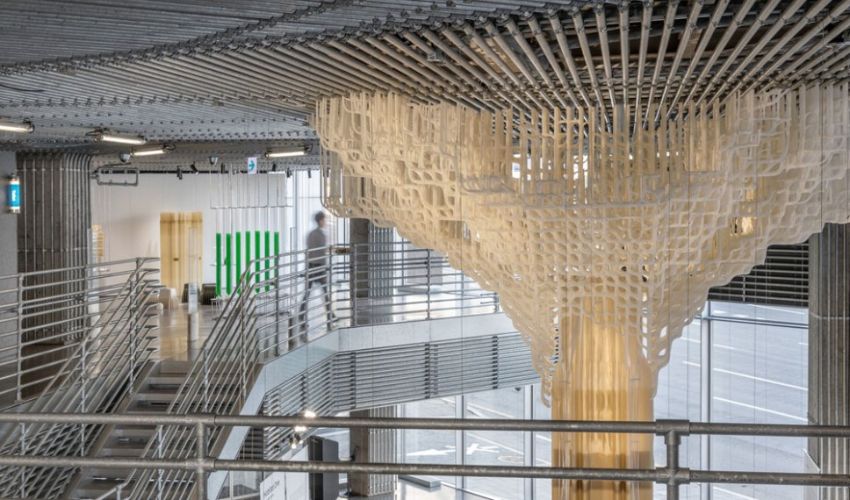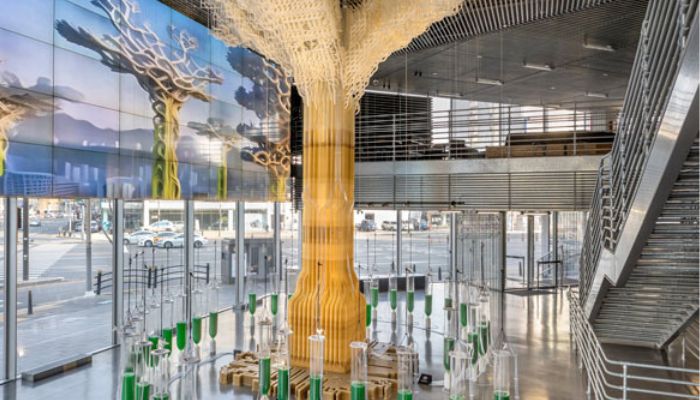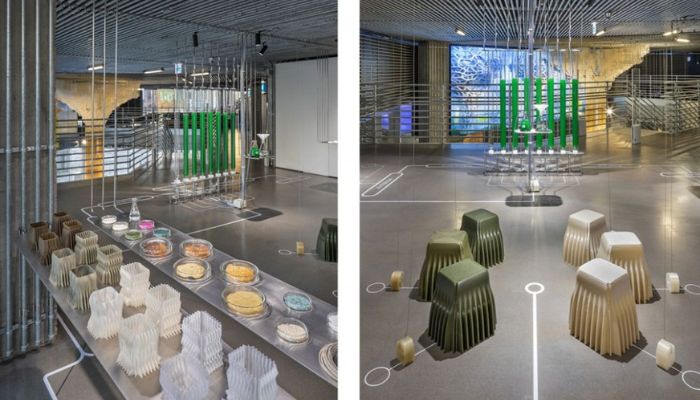In Seoul, 3D Printing Has Been Used to Create a Carbon-Neutral City Model Called Habitat One

3D printing is one of the best allies of our planet to preserve its fauna and flora in many aspects. We have seen how marine ecosystems have been reconstructed to help preserve others as well as the creation of things like paper using recyclable material. This time, there is yet another new artificial nature project that has been carried out through additive manufacturing in Seoul. More specifically, the creation of a tree made with algae-based biopolymers in an architectural model named Habitat One.
As mentioned, Habitat One is an architectural project that imagines and designs an ecological and carbon-neutral city. It was developed by EcoLogicStudio in collaboration with Hyundai Motor Company and implemented at their headquarters in Seoul, South Korea. The architectural model hopes to push boundaries and show people what it would be like living in a carbon-neutral world. In fact, Habitat One was made by combining three creations: two visionary Artificial Intelligence videos, the Bio Lab and also a 3D printed sculpture named Tree One which is the core of the project.

Tree One is in the center of Habitat One
Tree One as the name suggests is a tree created through 3D printing that is even capable of photosynthesis. The main goal of its design and creation is to bring to life the sustainable design concepts promoted at the exhibition, inspiring all those who visit. The main structural design of Tree One is based on a program that recognizes and recreates the tree structure by shaping the column. The trunk is entirely constructed from algae-derived biopolymers and its strength comes from the pleated shape inspired by the fibrous trunks of real trees. It was created through a robotic 3D printing process and the materials used were natural algae, sage algae, nonoilen and eco PLA.
At the entrance of the Bio Lab, as the space has been named, there is a reactor wall called PhotoSynthetica, which contains a biomass collection system. This reactor wall is fed with nutrients from the Biosphere and pollutants from the Urbanesphere. Visitors can observe the biopolymerization process and explore an extensive catalog of biomaterial samples, large-scale 3D printed biodegradable products, prototypes and an educational video about the creation of Tree One.
Moreover, the computational methodology used in Tree One has been extended to design furniture, such as stools, and various forms have been explored to demonstrate the diversity and quality of design that are also on display in the exhibition. You can learn more about the project HERE.

Some of the furniture created using the program
What do you think of the use of 3D printing to make Tree One for Habitat One in Seoul? Let us know in a comment below or on our LinkedIn, Facebook, and Twitter pages! Don’t forget to sign up for our free weekly Newsletter here, the latest 3D printing news straight to your inbox! You can also find all our videos on our YouTube channel.
*All Photo Credits: EcoLogicStudio






